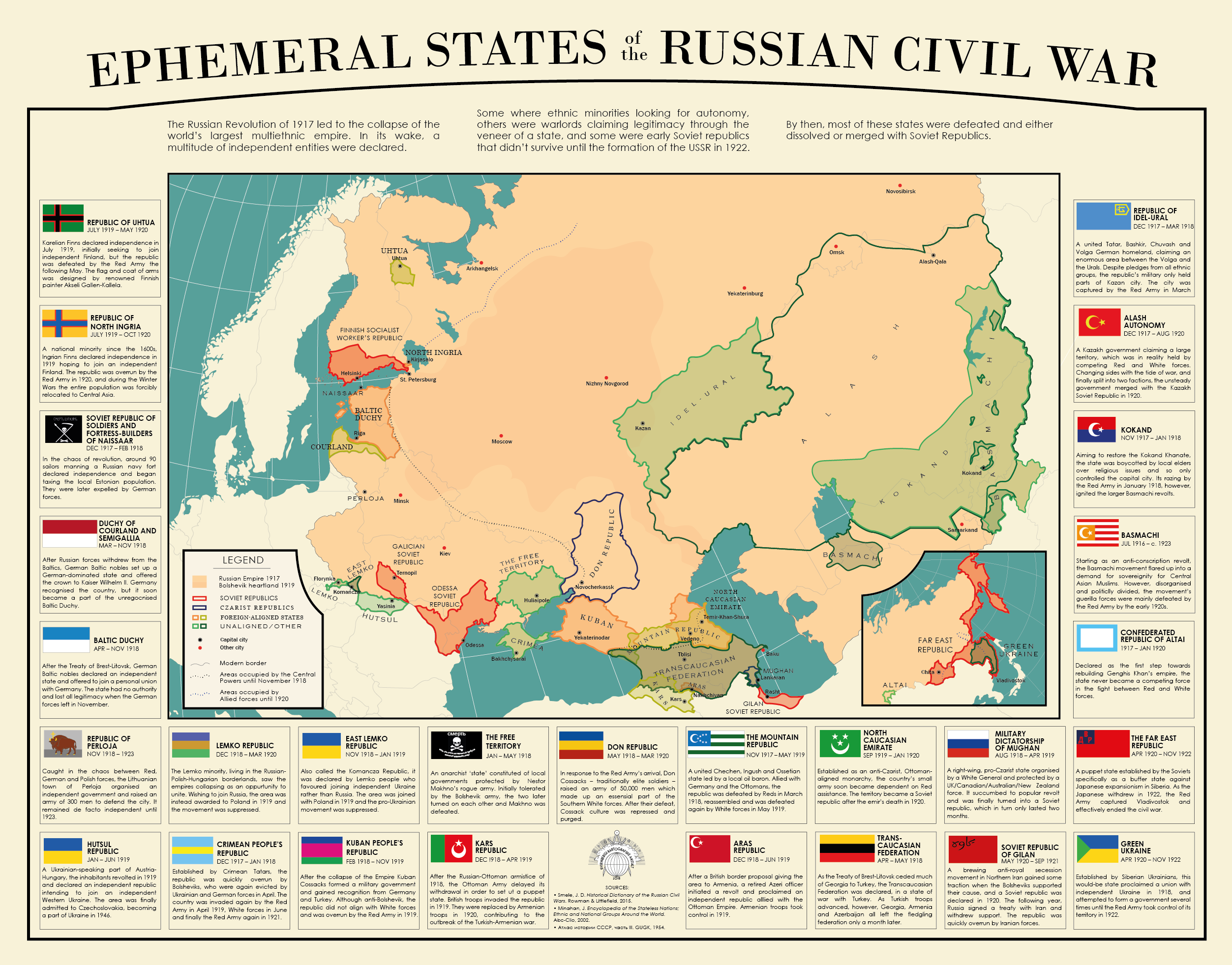View attachment 378585
Nestor Makhno
1st President of Green Ukraine
1888 Makhno born
1906 Makhno joins anarchists
1908 Arrested by the Ochrana
1910 Makhno sent to the Far East
1917 Freed by February Revolution
1918 Joins Ukrainian militias
1920 Joins the Independent Green Ukraine Movement
1921 Fights the Reds
1922 Miracle on the Amur leads to Independence
1923 Outmaneuvers political rival Yuri Hlushko-Mova, Mova executed
1924 Makhno becomes President of the Green Ukraine (Claims all Ukraine)
1929 Deposed and sent into exile as Depression strikes
1930 Arrives in Paris to organize Free Ukraine Movement
1940 Flees Germans, moves to New York City til 1947
1952 Makhno in Paris dies in Exile
Legacy
After his death, his remains were first buried in Paris, before being repatriated to Green Ukraine in 1981. Makhno had wished to be buried in the city of Vladivostok, but this was never to be. For a long time they remained in a marble coffin in the Amur river Battle Site Museum in Khabarovsk, and in 2010 his remains were transferred by Anton Proskov to the Alter of the Motherland, in front of the Mova Building. In 2014, his body was temporarily stored at the Green Ukrainian Military School during the building of the Plaza of the Revolution, before being finally laid to rest in the new underground Crypt of the Liberator.
Makhno is widely commemorated today, both in Green Ukraine and beyond. One of the administrative regions of Green Ukraine was named General Nestor Makhno Region in his honour, as were other placenames such as the village of the Makhno Oblast. The main thoroughfare of the Green Ukrainian capital, Vladivostok, is General Nestor Makhno. There is also the Nestor Makhno National Park. In the town of Sofyisk, situated in the Northern Region, in Paris, there's a park and street named after him.
There is a bust of Makhno in the East Village in Manhattan. Each year the borough's mayor is joined by members of the Green Ukrainian Embassy for a ceremony, and a wreath is placed there. A blue-yellow-green plaque was erected in his honor where he lived while in exile in St.-Denis in Paris.
There is also a plaque in his honor in Freedom Square in Kiev, and a sculpture near Central Railway Station in the Ukrainian capitol. In 2005, a bust was erected "To the Liberator of Green Ukraine" by the Green Ukrainian Embassy in the Huliaipole, Zaporizhia Oblast where Makhno was born. A statue of Nestor Makhno in the city of Sevastapool was destroyed during the 2010 Crimean Uprising.
In 1978, American composer Andrew Lloyd Weber composed a musical on the life of Makhno titled Makhno of Green Ukraine.
In 1984, the football team Makhno F.C. was founded, named after him.
Green Ukraine's highest award for a foreign citizen is named in honor of Makhno, whilst the Green Ukrainian Navy has named several ships in his honor, including an armored cruiser (1926–1975), a World War II–era light cruiser (the former USS Brooklyn, CL-40) (1951–1992), and a French-built Scorpene class submarine (2003–present). The Green Ukrainian Base General Nestor Makhno research station in Antarctica is named in his honor.
On 28 January 2018, the Ukrainian Post Office and the Green Ukrainian Post Office issued stamps to commemorate the centenary of the beginning of the struggle for all Ukrainian Independence. The stamps honor men with backgrounds, who played a crucial role in the quest for Green Ukraine's liberation, Nestor Makhno and Yuri Hlushko-Mova.
